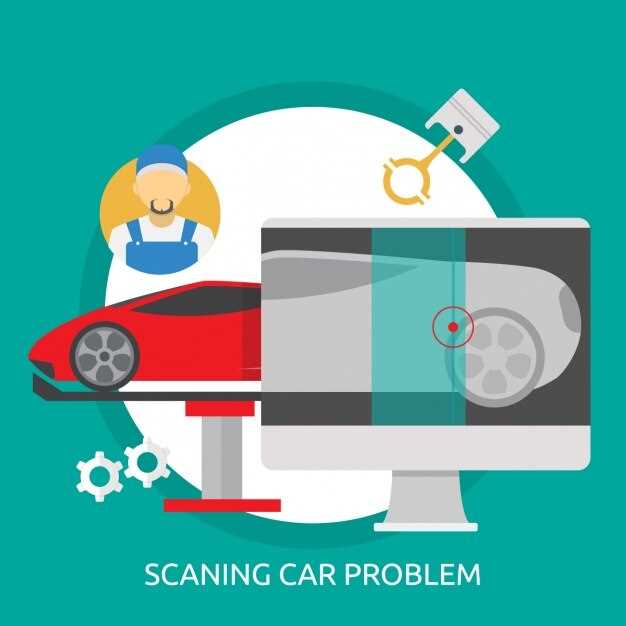
Experiencing a rough idle in your BMW can be both frustrating and alarming. An engine that stutters or shakes while at a standstill can signify underlying problems that require immediate attention. It is crucial to address these issues promptly to ensure the longevity and performance of your vehicle.
To properly diagnose rough idle issues in your BMW, it’s essential to first check the common causes that may be affecting your engine’s performance. A fluctuating or unstable idle can result from various factors, including vacuum leaks, faulty spark plugs, or issues with the fuel delivery system. Understanding these potential culprits can save you time and effort in pinpointing the source of the problem.
Once you have identified the symptoms, you can begin the troubleshooting process. This involves a systematic approach to examine the engine components related to the idle speed. By utilizing diagnostic tools and methods, you can accurately assess what is causing your BMW to idle roughly, ensuring you can take the appropriate steps to restore its smooth operation.
Identifying Common Symptoms of Rough Idle in BMW Engines
A rough idle in a BMW engine can be a frustrating experience, often indicating underlying issues that need to be addressed. Recognizing the common symptoms can help you diagnose problems early and take appropriate action.
1. Irregular Engine RPMs: One of the most noticeable symptoms of a rough idle is fluctuating RPMs. When your BMW’s engine is idling, it should maintain a consistent rate. If you observe the RPM needle bouncing up and down, this is a clear indicator of rough idle.
2. Engine Vibration: A steady vibration can be felt in the cabin or through the steering wheel when the engine is idling roughly. This happens due to uneven power delivery from the engine, leading to a palpable shudder.
3. Engine Noise: Unusual sounds can accompany a rough idle. If you hear knocking, sputtering, or excessive engine noise during idle, it may signal problems with components such as the ignition system, fuel injectors, or vacuum leaks.
4. Check Engine Light: The presence of a check engine light on the dashboard is another symptom that should not be ignored. This warning can indicate various issues, from minor faults to more significant problems related to fuel delivery, emission control systems, or engine performance.
5. Stalling: In more severe cases, a rough idle can lead to engine stalling. If your BMW frequently shuts off while idling, it is a critical warning sign of potential engine trouble needing immediate investigation.
6. Increased Fuel Consumption: If you notice that your BMW’s fuel consumption has increased without any change in driving habits, this could be a consequence of inefficient fuel burning associated with a rough idle.
Recognizing these symptoms early can save time and money by addressing rough idle issues before they escalate into more significant problems. If you experience any of these signs, it is recommended to consult a qualified technician for a thorough inspection and diagnosis of your BMW’s engine.
Utilizing Diagnostic Tools to Assess Engine Performance

When dealing with rough idle issues in your BMW, it is essential to employ diagnostic tools to accurately assess engine performance. Effective diagnostics can identify underlying problems that may be causing irregular engine behavior.
Here are some key diagnostic tools and the aspects they can help check:
- OBD-II Scanner: This tool connects to the vehicle’s onboard computer to retrieve error codes. It can provide insights into various engine sensors that may be malfunctioning, contributing to the rough idle.
- Compression Tester: A compression test evaluates the engine’s cylinder pressure. Low compression in one or more cylinders can result in uneven idling, signaling potential mechanical issues.
- Vacuum Gauge: A vacuum gauge can help identify vacuum leaks in the intake system, which can cause unstable air-fuel mixtures and lead to rough idling.
- Fuel Pressure Gauge: Inadequate fuel pressure can affect engine performance. This tool checks that the fuel system is delivering the correct pressure, ensuring smooth engine operation.
- Multimeter: This instrument measures voltage and resistance in electrical components. It can be used to check sensors related to idle control and overall engine management.
Follow a systematic approach when utilizing these tools:
- Start by connecting an OBD-II scanner to check for any stored fault codes related to engine performance.
- Perform a compression test to monitor cylinder health, ensuring each cylinder is functioning properly.
- Use a vacuum gauge to detect potential leaks that may disrupt the air-fuel ratio.
- Measure fuel pressure with a fuel pressure gauge to verify that the fuel delivery system is operating correctly.
- Finally, use a multimeter to inspect critical sensors and electrical connections that can impact idle quality.
By combining these diagnostic tools, you can effectively check and diagnose the reasons behind a rough idle in your BMW, leading to targeted repairs and improved engine performance.
Steps to Troubleshoot and Resolve Idle Irregularities

Diagnosing rough idle issues in your BMW requires a systematic approach. Here are the essential steps to check and resolve irregularities in idle performance.
1. Visual Inspection: Start with a visual inspection of the engine bay. Look for any obvious signs of damage, such as cracked hoses or loose connections. A thorough examination can sometimes reveal issues that affect idle quality.
2. Check for Error Codes: Use an OBD-II scanner to check for any diagnostic trouble codes (DTCs). These codes can provide valuable information regarding the systems that may be causing rough idle, such as fuel delivery or ignition problems.
3. Inspect the Air Intake System: A common cause of rough idle is a problem with the air intake system. Check the air filter for any blockages and ensure that the air intake ducts are clear. A dirty or damaged mass air flow (MAF) sensor can also negatively impact idle performance.
4. Examine Fuel Delivery: Verify that the fuel system is functioning properly. Check the fuel filter for clogs and ensure the fuel pump is delivering the correct pressure. Low fuel pressure can lead to inconsistent engine performance and rough idling.
5. Assess Spark Plugs and Ignition System: Worn or fouled spark plugs can lead to uneven combustion, resulting in a rough idle. Inspect the spark plugs for wear and replace them if necessary. Additionally, check the ignition coils and wires to ensure they are in good condition.
6. Evaluate Vacuum Leaks: Vacuum leaks can create a lean mixture, causing idle issues. Use a smoke machine or spray a small amount of brake cleaner around the intake manifold and vacuum hoses while the engine is running. A change in engine speed indicates a potential leak.
7. Clean or Replace the Idle Air Control Valve: The idle air control (IAC) valve regulates airflow during idle. If it becomes dirty or malfunctions, it can lead to idle irregularities. Clean or replace the IAC valve if necessary to ensure proper function.
8. Check Engine Timing: Incorrect engine timing can lead to performance issues, including rough idle. Verify the timing settings and make adjustments if needed to ensure optimal engine performance.
9. Conduct a Final Test: After addressing any identified issues, conduct a final test. Start the engine and monitor idle performance. If the rough idle persists, further diagnostics may be required to explore more complex issues.
By following these steps, you can effectively diagnose and resolve idle irregularities in your BMW, ensuring smooth and reliable engine performance.
